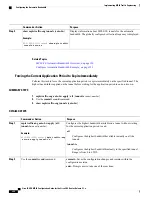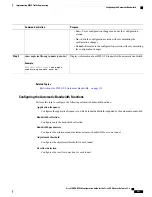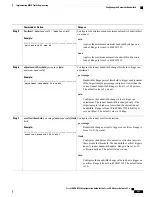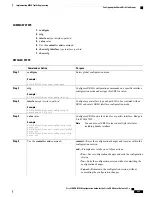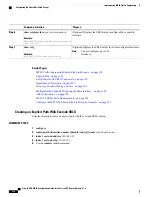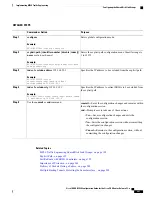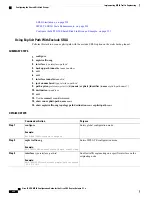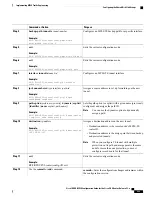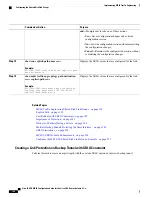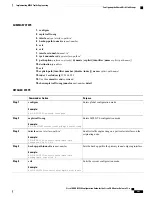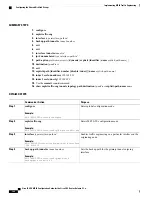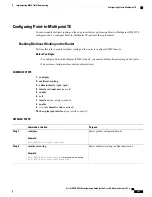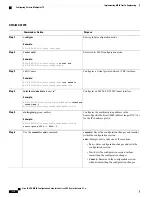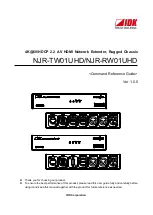
SUMMARY STEPS
1.
configure
2.
srlg
3.
interface type interface-path-id
4.
value value
5.
Use the
commit
or
end
command.
6.
show srlg interface type interface-path-id
7.
show srlg
DETAILED STEPS
Purpose
Command or Action
Enters global configuration mode.
configure
Example:
RP/0/RP0/CPU0:router# configure
Step 1
Configures SRLG configuration commands on a specific interface
configuration mode and assigns this SRLG a value.
srlg
Example:
RP/0/RP0/CPU0:router(config)# srlg
Step 2
Configures an interface type and path ID to be associated with an
SRLG and enters SRLG interface configuration mode.
interface type interface-path-id
Example:
RP/0/RP0/CPU0:router(config-srlg)#
interface POS 0/6/0/0
Step 3
Configures SRLG network values for a specific interface. Range is
0 to 4294967295.
value value
Example:
RP/0/RP0/CPU0:router(config-srlg-if)#
value 100
Step 4
You can also set SRLG values on multiple interfaces
including bundle interface.
Note
RP/0/RP0/CPU0:router (config-srlg-if)#
value 200
RP/0/RP0/CPU0:router(config-srlg-if)#
value 300
commit
—
Saves the configuration changes and remains within the
configuration session.
Use the
commit
or
end
command.
Step 5
end
—
Prompts user to take one of these actions:
•
Yes
—
Saves configuration changes and exits the configuration
session.
•
No
—
Exits the configuration session without committing the
configuration changes.
•
Cancel
—
Remains in the configuration session, without
committing the configuration changes.
Cisco IOS XR MPLS Configuration Guide for the Cisco CRS Router, Release 5.1.x
295
Implementing MPLS Traffic Engineering
Configuring the Shared Risk Link Groups










